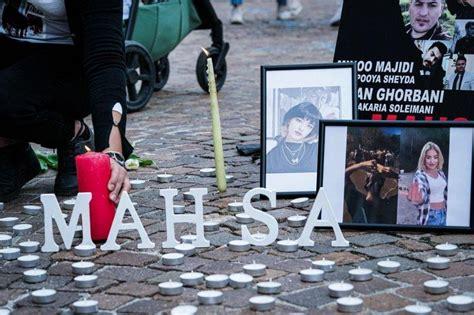
Iran begins new year with dizzying rate of executions
2024 began in Iran just as 2023 ended, with a dizzying rate of executions.
A Kurdish political prisoner was executed on Jan. 4 after enduring 14 years in prison. The number of executions recorded in 2023 reached at least 864, according to the People’s Mojahedin Organization of Iran (PMOI/MEK), the highest figure in the last eight years and about 34% higher than in 2022, when 646 people were executed. However, as many executions in Iran are carried out in secret, the actual number is likely to be much higher.
The frenzy of executions continued to escalate throughout 2023, with 313 taking place in the last three months of the year. Clearly, this alarming death toll is geared toward frightening the restive population into passivity.
In a further sign of the regime’s desperate plunge into misogynist immorality, last week Roya Heshmati, 33, was sentenced to the vicious punishment of 74 lashes, on the fictitious charge of improper veiling. The judiciary’s news agency, Mizan, said Saturday, “The sentence was carried out in accordance with the law and the holy Sharia. The specific areas (for flogging punishment) have been clearly specified in the law and the verdict.”
Heshmati continued to defy the strict dress code even as she was taken to be whipped, refusing to cover her hair. She was charged with “encouraging permissiveness” after appearing unveiled on several occasions in the capital, Tehran. She was also reportedly ordered to pay a fine of 12 million rials ($285). Whippings for breaching the dress code are relatively uncommon, although officials have increasingly cracked down on those defying the rules after the practice surged during anti-government protests that began in late 2022, triggered by the September 2022 death in custody of Mahsa Amini, a 22-year-old Iranian Kurd arrested for an alleged breach of the Islamic republic’s strict dress code for women.
The theocratic regime has also intensified its actions against political prisoners and their families. Last week, Iran’s longest-detained female political prisoner, Maryam Akbari Monfared, a mother of three, faced a retrial. She was sentenced to an additional three years in prison after already serving 14 years of a 15-year term. Her imprisonment was a result of her efforts to seek justice for the execution of three brothers and a sister in the 1980s, including the 1988 massacre in which 30,000 political prisoners, mostly activists and supporters of the main democratic opposition movement the MEK, were sent to the gallows.
Outside Iran, the regime is responsible for more killings. With the Middle East in turmoil over the Israel-Hamas war, following the Oct. 7 massacre of Israelis by Hamas, the regime is on a crusade of warmongering in the region. Israeli retaliation in Gaza has led to over 22,000 deaths to date, including thousands of innocent men, women and children. Whole towns and cities in Gaza have been razed to the ground, inflaming tensions in the Middle East and worldwide.
But, at the center of this grim litany of assassinations, bomb blasts, drone attacks and outright war, sits the head of the snake: the Iranian regime. Since hijacking the popular revolution that overthrew the sah in 1979, the mullahs’ Islamic Republic has exported death and destruction across the Middle East and worldwide. The theocratic regime has poured money, men and military materiel into Bashar al-Assad’s bloody civil war in Syria, the Houthi rebels in Yemen, the brutal Shi’ia militias in Iraq and the terrorist Hezbollah in Lebanon as well as Hamas in Gaza.
Consolidating their pariah status, the mullahs are openly backing and directing the ongoing drone attacks on commercial shipping in the Red Sea by the Houthi rebels in Yemen, even launching their own kamikaze drone strike on Dec. 23 against an Indian cargo vessel, the MV Pluto, a chemical tanker flying the Liberian flag and operated by a Dutch entity. The Houthis are an extremist Shi’ite movement, heavily armed and trained by the Quds force. As well as Iran, the Houthis count amongst their allies the usual suspects of Russia, North Korea and Syria.
As the internal situation deteriorates in Iran, resistance units of the MEK have also recently stepped up their activities nationwide. In addition to widespread support at home, the MEK has massive domestic and international backing. Recently, 455 former world leaders, judges, Nobel laureates, United Nations officials, human rights and legal experts and NGOs signed a letter denouncing Iranian President Ebrahim Raisi’s planned participation in the U.N. Refugee Forum in Geneva, forcing him to cancel his visit.
The mullahs fear and loathe the MEK, whom they see as the only viable and organized entity with the wherewithal to topple the regime and restore peace, justice, freedom and democracy to the beleaguered Iranian people. In response, they have launched wave after wave of assaults on the MEK, even resorting to assassinations, firebomb attacks and attempted terrorist bombings in Europe.
Now, in a last desperate bid, the mullahs have launched a bogus trial in absentia in Tehran of 104 exiled MEK members in the hope that their sham convictions will persuade Western democracies to place restrictions on the principal opposition movement to the ruling theocracy.
Reports have also emerged about how the mullahs’ regime is using its cyber army to manipulate reports on social media, removing references to human rights atrocities and other crimes. Apparently, many of the edits have targeted the English language Wikipedia page of the MEK, including deleting references to the 1988 massacre of more than 30,000 political prisoners, a crime against humanity being investigated by the U.N.
With the blood of innocents dripping from their hands, the mullahs should remember the apt words of U.S. President John Fitzgerald Kennedy, who said: “Those who make peaceful revolution impossible, make violent revolution inevitable.”
Source » msn.com





